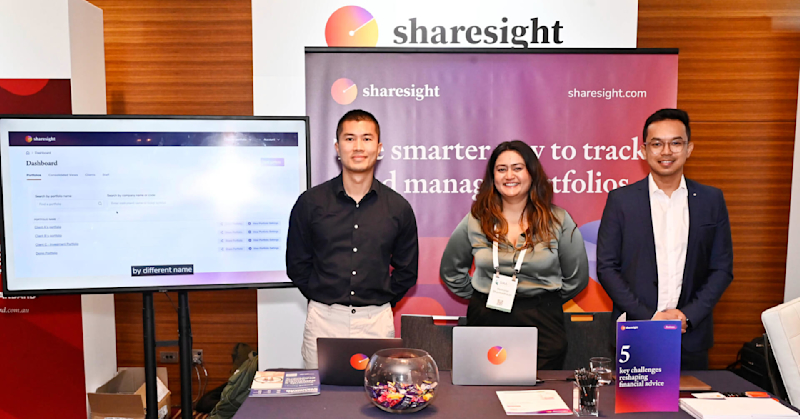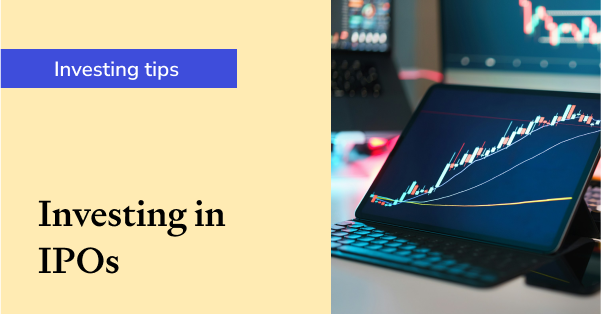Investment strategy: Portfolio construction and diversification
Disclaimer: This article is for informational purposes only and does not constitute a specific product recommendation, or taxation or financial advice and should not be relied upon as such. While we use reasonable endeavours to keep the information up-to-date, we make no representation that any information is accurate or up-to-date. If you choose to make use of the content in this article, you do so at your own risk. To the extent permitted by law, we do not assume any responsibility or liability arising from or connected with your use or reliance on the content on our site. Please check with your adviser or accountant to obtain the correct advice for your situation.
At the inaugural Investor-Tech Showcase, we got together with some of our leading technology partners to discuss current market conditions and how technology solutions, now more than ever, can assist investors in making more informed and strategic portfolio decision making.
In this second video of our series "Investment Technology Journey for Self-directed Investors", we summarise what diversification is and what a diverse portfolio might look like. We ask our panel of financial experts if it is possible to be over-diversified and how to avoid it, how volatility impacts diversification and what investors should be considering when it comes to optimising their portfolio with alternative investments.
Embedded content: https://www.youtube.com/watch?v=wptJeWayd_I
First of all, it’s important for investors to understand that building a diversified portfolio can help reduce risks, smooth out returns and improve long-term portfolio performance. This can be achieved by investing across different asset classes, companies, sectors and geographies.
See Morningstar’s Annual Asset Class Return chart below to find out how various asset classes have performed going back to 2002.

As you can see from the chart, it’s difficult to predict which asset class is going to be the top performer year after year. But by building a diversified portfolio, investors can expect their losses and returns to normalise with steady portfolio performance over the long-term.
When asked what over-diversification is and how to avoid it, Dr Laura Rusu, Founder and CEO at Diversiview LENSELL, explains that the main purpose of diversification is to reduce the risk of loss to get the level of return that you expect from your portfolio. Portfolio return is simply the weighted average of individual returns. Portfolio risk, on the other hand, is a more complex number.
Investments’ weight in the portfolio and the correlation between investments are both components of portfolio risk. What you should ideally do is look for those investments which are negatively correlated to each other. This essentially means that they will move in opposite directions in response to the market events. In this way, you will have lower portfolio risk overall.
"You might have different stocks, bonds and asset classes in your portfolio, but if they are all strongly correlated to each other, you won’t have a diversified portfolio." – Dr Laura Rusu
Mark LaMonica, Director of Product Management at Morningstar Australia, suggests that in some cases, an investor should seek market risk exposure. As investors, we trade risk for profit. Therefore, if an investor is going to invest in individual shares, they should carefully consider how many of them they want to add to their portfolio before doing so. This is because each new asset purchased incurs a cost, including transaction costs, buy-sell spreads and so on, and more purchases will only raise these costs.
When asked about bonds and fixed interest, Anto Joseph, CEO and Co-founder at Stropro begins by saying that investors are currently uncertain about what might happen to the bond market. With rapid interest rate hikes by central banks, the value of bonds is at risk and investors are seeing a full decade bull market for bonds come to an end. With the current situation in mind, Anto says there are certain things that investors need to consider when investing in bonds:
-
The creditworthiness of the bond and the bond issuer
-
Whether or not to hold that bond to maturity
-
Understanding what the yield to maturity on a bond might be
-
Not treating bonds as a cash substitute.
Mark adds that it’s important to know what you are trying to accomplish as an investor. One needs to ask; why do I need bonds as an investment? For example, if you are approaching retirement and you are trying to eliminate sequencing risk, then bonds could be the way to go. But younger investors should not be worried about volatility. Rather, they should be concerned about long-term returns because those are going to help them achieve their goals. If an investor wants to lower volatility in their portfolio, bonds are one tool, but they're not the only tool.
Key considerations for lowering volatility:
-
Holding cash. The advantage of cash is that it's not going to go anywhere. At the very least, from an inflation perspective it can lose value but it's not going to go down like bonds and bonds can go down significantly
-
Diversify your share type. Consider large caps over small caps. Large caps are often shares of large corporations, whereas small caps are issued by smaller organisations. Larger firms typically have more financial resources and have been in operation for a longer period of time. That is, compared to small caps, they are better equipped to weather a financial collapse or another bad occurrence, resulting in lesser volatility.
-
Investing in dividend paying shares versus non dividend paying shares
-
Investing in shares that are in "safer" businesses where volatility is lower but the expected future outcomes are also less.
"There are a lot of ways to lower volatility, you just need to think about your goal and what tool is right for you." – Mark LaMonica
Finally, we asked our panel of experts, what is the number one thing to keep in mind when it comes to diversification?
When it comes to diversification, Laura believes that there is no special recipe. It's about the individual investor and it's not about following what somebody else says. Investors need to do their own research and calculate what brings them closer to their goal, rather than taking a generalised or rigid approach.
Anto echoes this sentiment, adding that an investor can also achieve fixed returns on their portfolio using defined outcome investing. This essentially means investing in non-traditional asset classes and exploring a wider set of opportunities to reduce volatility and achieve better risk outcomes.
"Investors should keep in mind that the most important metric is not what return they are achieving but how those returns are weighted against the risk they are taking." – Anto Joseph
Mark is of the opinion that many investors believe diversification is about "just throwing a bunch of things into the pot" and they are not doing it in a deliberate way. Investors need to understand that diversification requires structured thinking about adding an asset or alternative investment and asking yourself; what am I hoping to accomplish with this?
In general, investors should avoid a careless approach to diversification. Instead, a more considered approach to optimise portfolio decision making and performance will deliver better outcomes. This includes taking self-educated steps towards financial literacy and leveraging the latest financial technology tools.
Automatically track your investment performance with Sharesight
Thousands of investors worldwide are already using Sharesight to automatically track the performance of their investment portfolio. What are you waiting for? Sign up and:
-
Track all your investments in one place, including stocks in over 40 major global markets, mutual/managed funds, property, and even cryptocurrency
-
Automatically track your dividend and distribution income from stocks, ETFs and mutual/managed funds
-
Run powerful reports built for investors, including Performance, Portfolio Diversity, Contribution Analysis, Multi-Period, Multi-Currency Valuation and Future Income (upcoming dividends)
-
Get the true picture of your investment performance, including the impact of brokerage fees, dividends, and capital gains with Sharesight’s annualised performance calculation methodology
Sign up for a FREE Sharesight account to start tracking your performance (and tax) today!
![]()
FURTHER READING

Key takeaways from SIAA 2025: Trends, insights & industry highlights
We summarise the key takeaways from the 2025 SIAA conference in Sydney, covering industry insights, market trends and the future of financial advice.

5 ways Sharesight keeps your data safe
Here at Sharesight, we maintain constant vigilance around cyber security. In this blog, we discuss five ways Sharesight keeps your data safe.

The investor's guide to IPOs: Risks, rewards and strategies
Discover when to invest in IPOs, how to approach them strategically, and how Sharesight helps you track and optimise your performance.